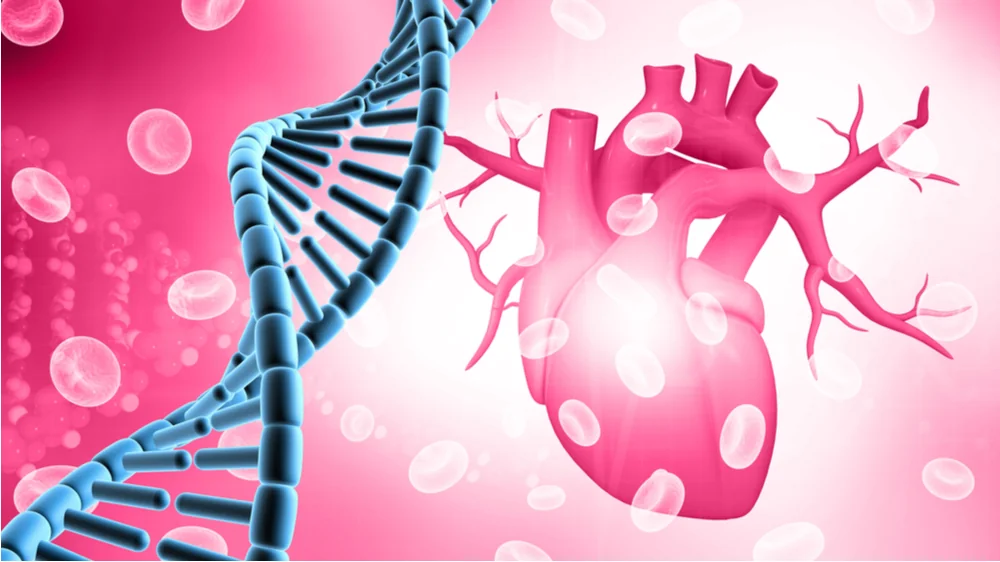Scientists from Duke University have found a way to make adult fibroblasts differentiate into cardiomyocytes, which might help develop better heart attack treatments [1].
The imperfect repair
Myocardial infarction, or heart attack, is a leading cause of death and disability. It happens when the blood flow to a part of the heart gets blocked, often by a blood clot, leading to cell death and necrosis [2]. When the blood flow is restored, the healing is similar to that of flesh wounds. Fibroblasts recruited to the area produce a lot of intracellular matrix elements, which results in the formation of stiff scar tissue. This decreases the heart’s efficiency, negatively affecting future lifespan and healthspan.
This imperfect repair process reflects the changes we undergo after birth. Fibroblasts are multipotent cells that can differentiate into other cell types, such as adipocytes, chondrocytes, and cardiomyocytes, the heart muscle cells. This process is effective in fetuses and newborns, which is why cuts on a newborn’s skin often heal perfectly without leaving any scar tissue. However, after a fairly short time, fibroblasts become less inclined to differentiate, preferring to produce the extracellular matrix instead.
Scientists have been looking for ways to trick adult fibroblasts into behaving “immaturely”, differentiating into myocytes to heal myocardial infarction more effectively [3]. However, attempts at direct fibroblasts to myocytes reprogramming in vivo have been hampered by low reprogramming efficiency. Apparently, it’s hard to teach old fibroblasts new tricks.
Back in time
In this new study, the researchers attempted to “identify the changes in fibroblasts after birth and how these changes could be manipulated for therapeutic benefits”. First, they isolated cardiac fibroblasts from neonatal and adult mice. All fibroblasts were identically passaged: that is, they had undergone roughly the same number of divisions, which made them of a similar “cellular age”. The fibroblasts were then transfected with a cocktail of four micro-RNAs (miRNAs) that had been shown by previous research to induce reprogramming of fibroblasts into cardiomyocytes, albeit with low efficacy.
Reprogramming worked well in neonatal, but not adult, fibroblasts. The researchers looked at transcription factors that were expressed differently in those two types of fibroblasts and then made several more attempts at reprogramming, each time adding a siRNA (short interfering RNA) to silence one of the candidate factors. Silencing Epas1, which was highly expressed in adult but not neonatal fibroblasts, seemed to work best, robustly increasing the number of reprogramming events in the culture. Conversely, overexpressing Epas1 in neonatal fibroblasts resulted in them losing their remarkable differentiation capacity.
New myocytes and improved cardiac function
To test their new insights, the researchers inflicted myocardial infarction on mice, and then delivered the reprogramming miRNA combo and the Epas1-blocking siRNA directly into the infarction border zone. Two months after the injury, no new cardiomyocytes appeared in mice that received sham treatment. In mice who received only the reprogramming cocktail, few reprogramming events occurred. However, in the mice that also received Epas1-blocking siRNA, about 20% of resident cardiomyocytes turned out to be former fibroblasts. The treatment also significantly improved cardiac function.
Birth may be the trigger
The authors hypothesized about the event that triggers the expression of Epas1 and moves myofibroblasts towards their adult differentiated phenotype. They suggest that this cue might be oxygen deprivation during birth, since low oxygen levels are known to induce Epas1 expression [4]. The researchers mention that low oxygen levels during birth might also be the stimulus behind cardiomyocyte cell cycle exit (adult cardiomyocytes are largely non-proliferative).
The researchers note that while they chose Epas1, which yielded good results, other transcription factors might be at play as well. Targeting several factors at once might lead to even better outcomes. For RNA delivery, the researchers used exosomes, a type of extracellular vesicles used by cells for communication. This method of delivery was popularized by recent COVID-19 vaccines that use it to deliver their RNA cargo.
Conclusion
Regaining the impressive regenerative abilities that we lose soon after birth might be the key to staving off numerous deadly diseases. This research underscores how pliable cell fate can be, and that we might be able to manipulate it to produce new differentiated cells in environments that normally do not allow this. Direct reprogramming of fibroblasts in vivo can also be used outside of the cardiac context, such as in producing new cartilage.
Literature
[1] Sun, H., Pratt, R. E., Dzau, V. J., & Hodgkinson, C. P. (2023). Neonatal and adult cardiac fibroblasts exhibit inherent differences in cardiac regenerative capacity. Journal of Biological Chemistry, 104694.
[2] Ojha, N., & Dhamoon, A. S. (2021). Myocardial infarction. In StatPearls [Internet]. StatPearls Publishing.
[3] Chen, Y., Yang, Z., Zhao, Z. A., & Shen, Z. (2017). Direct reprogramming of fibroblasts into cardiomyocytes. Stem cell research & therapy, 8, 1-8.
[4] Peng, J., Zhang, L., Drysdale, L., & Fong, G. H. (2000). The transcription factor EPAS-1/hypoxia-inducible factor 2α plays an important role in vascular remodeling. Proceedings of the National Academy of Sciences, 97(15), 8386-8391.




